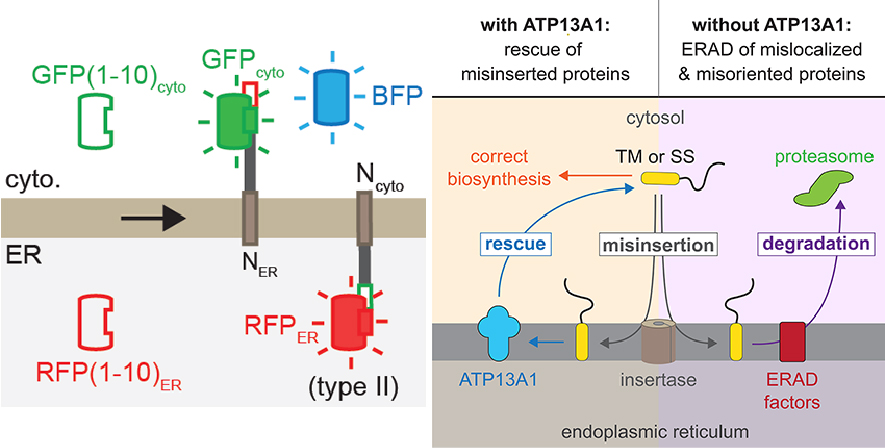
Newly synthesized transmembrane proteins must pass a series of obstacles. Firstly, they must localize to the correct organelle, such as the endoplasmic reticulum (ER) or mitochondria. Secondly, upon arrival at that organelle, they must insert into the lipid bilayer in the correct orientation. Failure to clear these obstacles prevents proper protein function and risks proteotoxicity. Although a lot of work has focused on how proteins are correctly targeted and inserted, much less is known about the mechanisms that identify and process mistargeted or misoriented proteins.
In this study, McKenna et al. develop a dual split fluorescent protein reporter system that measures the relative proportion and stability of correctly versus incorrectly oriented populations of a transmembrane protein at the ER. Using this system, they find that the ER-localized ATPase, ATP13A1, corrects transmembrane proteins that have inserted into the ER membrane in the wrong orientation. Loss of ATP13A1 exposes misoriented ER membrane proteins to quality control machinery, leading to their eventual degradation by proteasomes. Surprisingly, even though different misoriented proteins all use ATP13A1 for correction, they engage distinct degradation factors. McKenna et al. also build on their previous findings showing that ATP13A1 removes mislocalized mitochondrial transmembrane proteins from the ER, providing them another opportunity to reach the mitochondria. The authors leverage biochemical and cell-based assays to show that many of these transmembrane proteins mislocalize to the ER via the EMC (ER Membrane Protein Complex). In the absence of ATP13A1, these mislocalized mitochondrial proteins are cleaved by SPP (Signal Peptide Peptidase), which leads to their degradation by proteasomes. These findings illustrate the prevalence of corrective quality control mechanisms to rescue proteins that fail a distinct step of biosynthesis but retain the ability to fold properly.